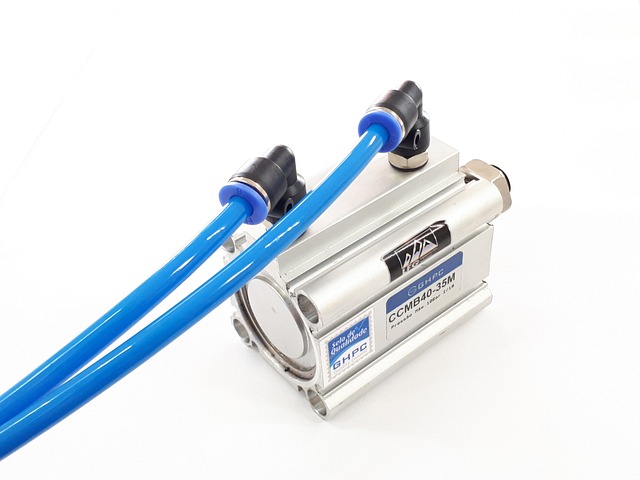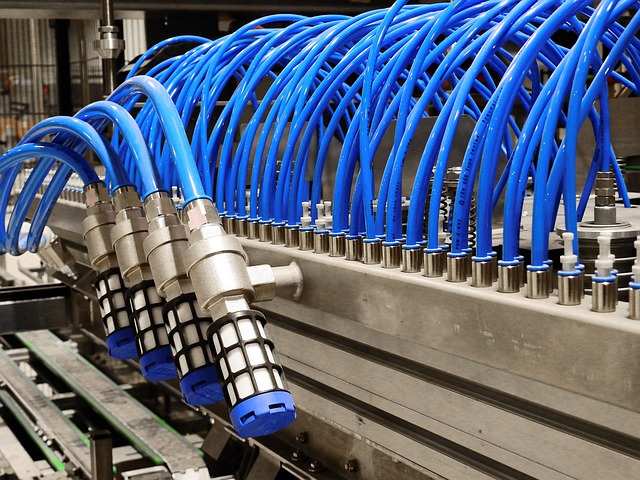Pneumatic Cylinders: Advantages of Air Cylinders
What are Pneumatics?
Pneumatics is the unsung hero powering a multitude of industries worldwide. In its essence, it harnesses the power of compressed air to drive mechanical motion.
Picture this: a controlled burst of air, meticulously directed, sets gears, pistons, and actuators into graceful choreography. This mastery of pressurized air holds paramount significance in realms as diverse as manufacturing, automotive, and aerospace.
It’s the sturdy backbone of production lines, automating tasks with precision and efficiency. So, while it might seem like a subtle force, never underestimate the impact of pneumatics on the grand operation of modern industry.

What are the Advantages of Pneumatics?
Firstly, their cost-effectiveness is a compelling factor. The components required for pneumatic systems are generally less expensive compared to their hydraulic or electrical counterparts. This makes them an economical choice, especially for large-scale industrial operations.
Simplicity is another key strength. Pneumatic systems operate on straightforward principles, utilizing compressed air to drive mechanical motion. This simplicity translates to ease of installation, operation, and maintenance.
Reliability is a hallmark of pneumatic systems. They are known for their robustness and ability to perform consistently over extended periods. This makes them indispensable in settings where precision and dependability are paramount
Applications of Pneumatics
Pneumatics finds itself at the heart of numerous critical industries. In manufacturing, it’s the unsung hero of assembly lines, deftly handling tasks from pick-and-place operations to precision cutting.
The automotive sector relies on pneumatics for a multitude of functions, from powering air brakes to operating robotic arms in production facilities.
Even in healthcare, where hygiene and precision are non-negotiable, pneumatics are used extensively in devices like ventilators and surgical instruments.
In aerospace, where precision is paramount, pneumatics ensures the smooth operation of landing gear and various flight control systems.
Their adaptability and reliability have earned them a well-deserved place in these diverse sectors, quietly powering the machinery that drives modern life!
What is the Difference Between Pneumatics and Hydraulics?
Pneumatics rely on compressed air to transmit power, while hydraulics use a liquid, typically oil. This core difference stems from their respective strengths and applications.
Pneumatics excel in scenarios requiring speed and simplicity, making them well-suited for tasks like assembly lines and robotics. On the other hand, hydraulics, with their incompressible fluid, are preferred for applications demanding high force, like heavy machinery and construction equipment.
The choice between the two hinges on factors such as load requirements, precision, and environmental conditions. Both systems have their unique merits, and a judicious selection is key to optimizing performance in any given application.

Components of Pneumatic Systems
- Compressors: These are the powerhouses of pneumatic systems. Compressors take in ambient air and mechanically compress it to a higher pressure. This is akin to the engine in a car generating the necessary force.
- Valves: Consider valves as the traffic regulators within a pneumatic system. They determine the flow of compressed air, dictating when and where it’s directed. Valves are crucial for controlling the motion and operation of actuators.
- Actuators: Actuators are the muscle behind pneumatic systems. They convert the energy from compressed air into mechanical motion. This is comparable to pistons in an engine, driving movement within the system.
- Cylinders: Cylinders are a specific type of actuator that provides linear motion. They consist of a cylindrical chamber and a piston, which moves back and forth as compressed air is introduced. This motion is harnessed for various applications, like moving a load or performing work.
- Filters, Regulators, and Lubricators (FRLs): Often referred to as the “FRL unit,” this component trio ensures the quality and condition of the compressed air. Filters remove impurities, regulators control pressure, and lubricators add a fine mist of oil to enhance system performance.
- Air Reservoirs: Reservoirs, or air tanks, store compressed air to meet fluctuating demand. They act as a buffer, ensuring a consistent and reliable supply of compressed air.
- Pressure Gauges: These gauges provide a visual representation of the system’s pressure, allowing operators to monitor and adjust as needed for optimal performance.
- Control Systems: This encompasses the logic controllers, sensors, and other electronic components that manage the operation of the pneumatic system. These systems can automate processes, ensuring precision and efficiency.
- Tubing and Fittings: These are the veins and arteries of a pneumatic system. Tubing transports the compressed air, while fittings secure connections between components, ensuring airtight seals.
- Safety Devices: Pressure relief valves and other safety mechanisms are vital to prevent over-pressurization and ensure the system operates within safe parameters.
Pneumatic Cylinders & Couplers
Pneumatic Cylinders & Couplers is an aluminum hydraulic cylinder manufacturer that offers aluminum and stainless steel pneumatic cylinders for almost any application. They are committed to providing solutions for your needs in increasing your efficiency, productivity, and profitability. They design and manufacture products for many applications and a wide variety of industries, including Packaging, Printing, Food Processing, Material Handling, Machine Tools, Pulp & Paper, Food Processing, Animation and Robotics, and Automotive Manufacturing.
In addition to their standard hydraulic, pneumatic cylinders, they also can have your hydraulic cylinders specifically built for your machines or applications. These aluminum hydraulic cylinder manufacturers provide the best of the best – these cylinders are constructed of stainless steel and are great for applications requiring additional durability as well as impact-resistant construction.
Cylinders from Pneumatic Cylinders & Couplers
- Non-Rotating Cylinders
- Stainless Steel Round Body Cylinder
- Standard NFPA Products- Aluminum NFPA Cylinders, Stainless Steel NFPA Cylinders, Steel NFPA Cylinder
Conclusion
In conclusion, pneumatics stands as an indispensable force in the realm of modern industry. Its ability to harness compressed air and translate it into precise mechanical motion is nothing short of remarkable.
From manufacturing plants to aerospace facilities, pneumatics serves as the unassuming powerhouse that drives efficiency and automation. The synchronized dance of gears, pistons, and actuators propelled by controlled bursts of air exemplifies the mastery of this technology.
It’s a testament to the ingenuity of human engineering, illustrating how a seemingly subtle force can wield such profound influence in the grand operation of industries worldwide. Pneumatics remains a cornerstone of progress, a force to be reckoned with, and an unsung hero that continues to shape the course of modern industrial processes.


